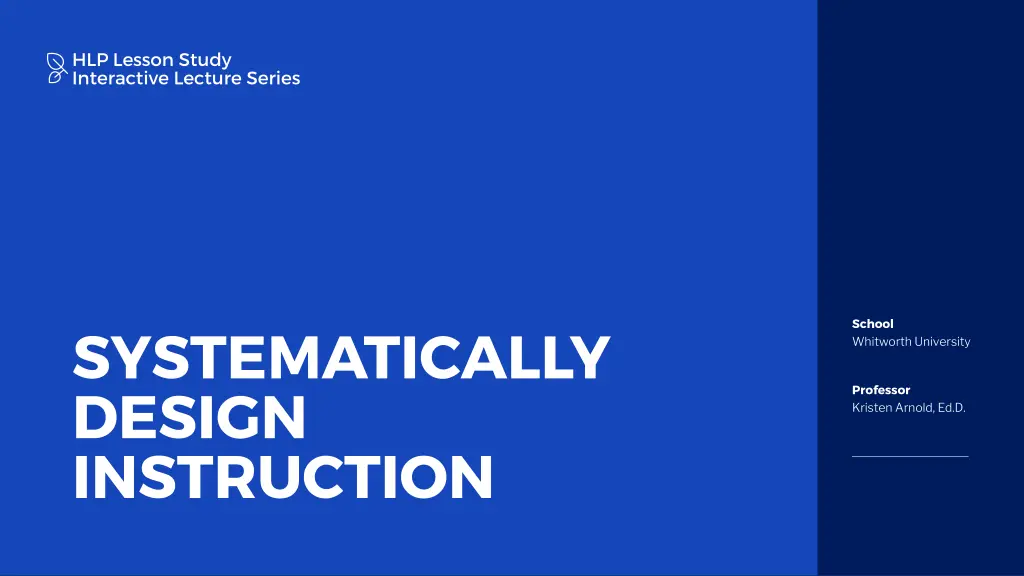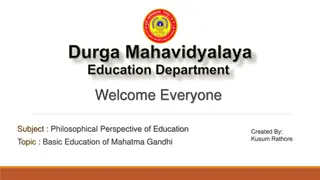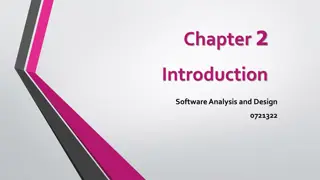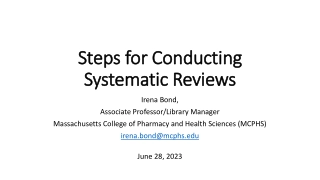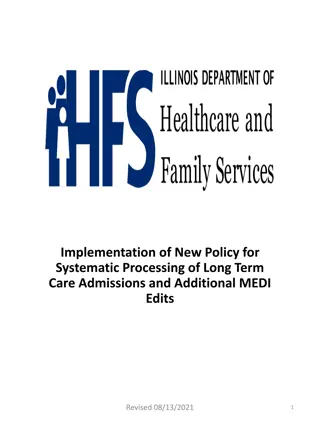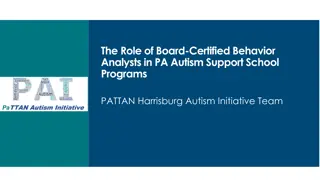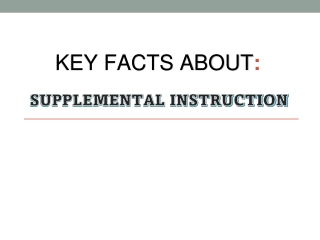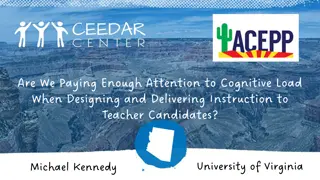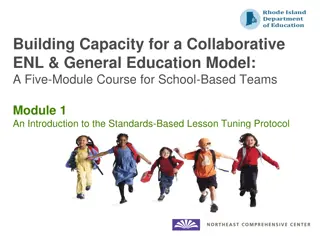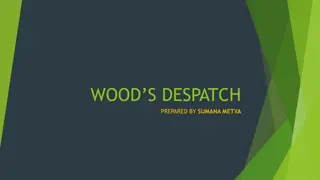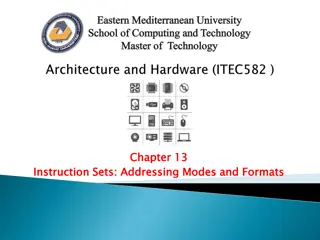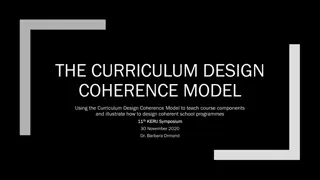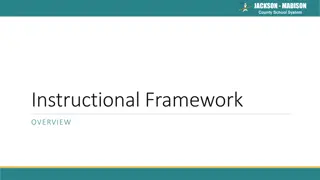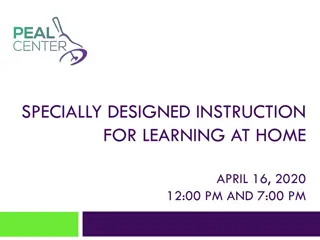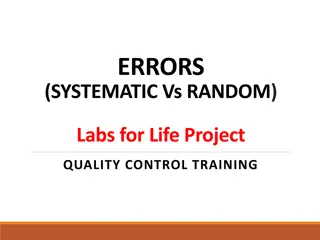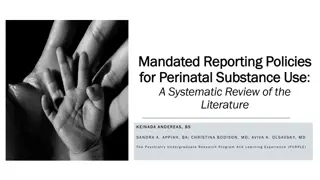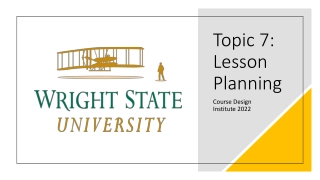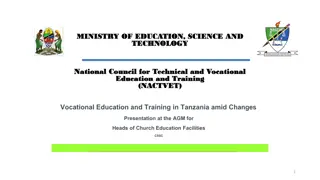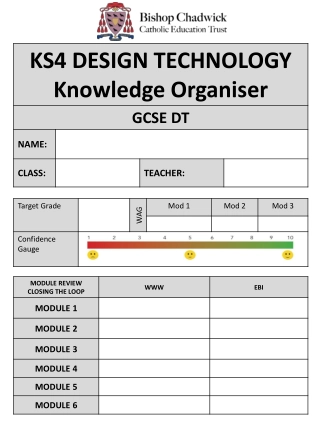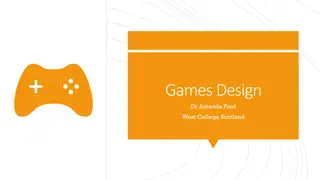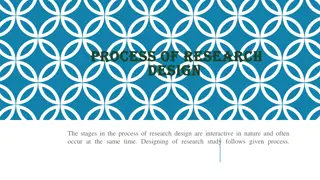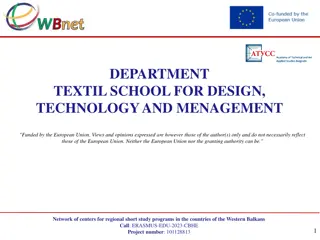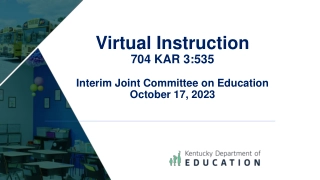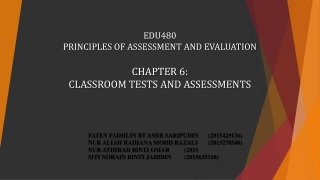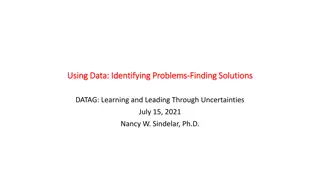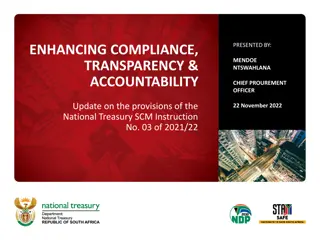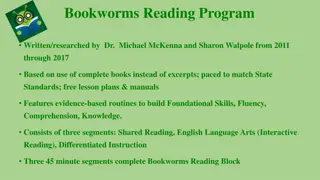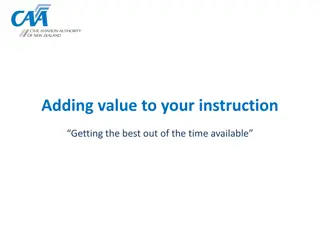Systematic Instruction Design in Education
Join the HLP Lesson Study Interactive Lecture Series at Whitworth University with Professor Kristen Arnold, Ed.D. Explore the importance of clear learning goals, logical lesson sequencing, and student assessment in instructional design. Develop a deeper understanding of systematically designing instruction towards specific learning goals for effective teaching practice.
Download Presentation

Please find below an Image/Link to download the presentation.
The content on the website is provided AS IS for your information and personal use only. It may not be sold, licensed, or shared on other websites without obtaining consent from the author. Download presentation by click this link. If you encounter any issues during the download, it is possible that the publisher has removed the file from their server.
E N D
Presentation Transcript
HLP Lesson Study Interactive Lecture Series School SYSTEMATICALLY DESIGN INSTRUCTION Whitworth University Professor Kristen Arnold, Ed.D.
Welcome to today's class! Study Series HLP Lesson Today's Agenda 01 Research Synthesis Summary & Review Activity HLP12 Video Review 02 ACCOMPLISH Framework 03 Systematic Design Principles 04 Classroom Connection: Learning Target Analysis 05 To participate today, you will need this textbook and your Reading Response Journal. 02
Study Series HLP Lesson Learning Objectives Describe the characteristics and the importance of establishing clear learning goals. Clear Learning Goals Explain how to logically sequence and prioritize knowledge and skills within the context of instructional delivery. Logical Sequence Effectively design a lesson with careful consideration of student assessment data and learning goals. Demonstrate an understanding of why each lesson should build on previous concepts taught. Lesson Planning 03
Study Series HLP Lesson Today's topic HLP #12: Systematically Design Instruction Systematically design instruction toward a specific learning goal. 04
HLP12 Study Series HLP Lesson Teachers help students to develop more important concepts and skills that provide the foundation for more complex learning. Teachers sequence lessons that build on each other and make connections explicit in both planning and delivery. They activate students' prior knowledge and show how each lesson "fits" with previous ones. Planning involves careful consideration of learning goals, what is involved in reaching the goals, and allocating time accordingly. Ongoing changes (e.g., pacing, examples) occur throughout the sequence based on student performance (McLeskey et al., 2017, p. 72). Let's Discuss and Analyze Together Pause, Reflect, and Connect = 20 minutes Pause Pause to re-read this HLP once more, reviewing your notes and highlights on pp. 70-73 in your HLP text. Reflect Reflect on what the research states in your text about (a) identifying and prioritizing long- and short-term learning goals (HLP11) and (b) systematically designing instruction toward a specific learning goal. Why are these HLPs integral to our teaching practice in the context of inclusive classrooms? Connect Connect the concept of systematically designed instruction to your practicum classroom. What does planning look like in your practicum classroom? How do you currently plan and prepare for lessons that you teach? 05
Study Series HLP Lesson Clear Learning Goals Establishing and communicating clear learning goals gives teachers and students directions for planning. Clear learning goals help teachers know what to teach and assess, students understand what they are expected to learn, and parents better understand student progress to become more engaged in student learning. More importantly, when teachers are clear about their learning targets, student achievement is POSITIVELY AFFECTED (Konrad et al., 2019, p. 158) 06
Study Series HLP Lesson HLP12 Video Review = 25 minutes In your Reading Response Journal, respond to the prompts in the graphic organizer under HLP12 as you watch the video. Pause the video to record your thoughts and refer to your text as needed. 07
Study Series HLP Lesson Antecedent condition Conspicuous behavior Clear criteria Observable Measurable Positive Linked to the general education curriculum Individualized Socially valid High reaching ACCOMPLISH Mnemonic for Designing Clear Learning Goals (Grahm-Day & Konrad, 2019). This framework helps teachers: Deconstruct curriculum standards. Clearly articulate the conditions when/where/how learning will happen. Develop mastery criteria. Make sure goals are within a student's ZPD. 08
Study Series HLP Lesson Students will write a paragraph. Given a specific task during cooperative learning group activities, students will take turns speaking. Given feedback on their performance on a spelling pretest, students will write the weekly words they spelled incorrectly three times each. Students will read a passage twice each session for five weeks. Given 20 multiplication facts, students will write the products with 50% accuracy. Given a descriptive writing prompt, students will write a paragraph consisting of a topic sentence, three to four supporting detail sentences, and no more than three transcription errors. When presented with a word find of 20 science terms, students will locate and circle each term. (Konrad et al., 2019, p. 159). Clear/Unclear Learning Goal Analysis Activity = 15 minutes Review the following examples and give a thumbs- up if you think the learning goal is clear and meets the ACCOMPLISH criteria. If not, give the goal a thumbs-down and be able to explain to your table group WHY. 09
Systematic Sequencing Study Series HLP Lesson General Principles BIG IDEAS Big ideas are foundational and should be taught first (i.e., phenomena in science is cyclical). CYCLES MAIN IDEAS Butterfly Life Cycle Big ideas are foundational and should be taught first (i.e., phenomena in science is cyclical). DETAILS Stages Specific information or unit concepts should follow (i.e., life cycle and water cycle). 10
Study Series HLP Lesson Systematic Sequencing Questions for Teachers to Ask BIG IDEAS and MAIN IDEAS before DETAILS Does future learning rely on acquisition of the knowledge or skill? Is the skill needed for independent living? Will the skill help students in other content areas or classes? Is it a standard or goal on the student's Individualized Education Program (IEP)? Is the skill valued by others in the community, and does it have utility in the real world? What is the cost-benefit ratio? Is the amount of time needed to teach the skill commensurate with anticipated outcomes? (Konrad et al., 2019, p. 162) 11
Study Series HLP Lesson Systematic Sequencing General Principles LESS COMPLEX SKILLS MORE COMPLEX SKILLS PREREQUISITES REQUISITES CONCRETE ABSTRACT SIMILAR SKILLS & CONCEPTS SKILLS REQUIRING DISCRIMINATION (Konrad et al., 2019, p. 161) 12
Study Series HLP Lesson Classroom Connection Learning Goal Analysis = 30 minutes In your Reading Response Journal, you were to record three learning goals or targets used in your practicum classroom this past week. Team up with two people at your grade level or content area and analyze your learning targets together to see if they meet the ACCOMPLISH criteria. Be prepared to share out to the whole group and summarize common characteristics between your learning goals. Consider characteristics common to your learning goals that may be present, missing, or unclear. 13
Study Series HLP Lesson Recap of today's class Connection to Practice 1 Connection to Practice 3 In what ways does establishing clear learning targets help all students learn more effectively? What is considered "mastery" criteria in the context of my classroom? Connection to Practice 2 Connection to Practice 4 How can you build on previous HLPs (use of assessment data and collaboration) to systematically design instruction? How can I embed the ACCOMPLISH planning framework in my weekly lesson planning sessions? 14
References Study Series HLP Lesson Causton-Theoharis, J., & Tracy-Bronson, C. P. (2015). The educator's handbook for inclusive school practices. Paul H. Brookes. Konrad, M., Hessler, T., Alber-Morgan, S. R., Davenport, C. A., & Helton, M. R. (2019). Systematically design instruction toward a specific learning goal. In J. McLeskey, L. Maheady, B. Billingsley, M. T. Brownell, & T. J. Lewis (Eds.), High-leverage practices for inclusive classrooms. Council for Exceptional Children & CEEDAR. McLeskey, J., Barringer, M-D., Billingsley, B., Brownell, M., Jackson, D., Kennedy, M., Lewis, T., Maheady, L., Rodriguez, J., Scheeler, M. C., Winn, J., & Ziegler, D. (2017, January). High-leverage practices in special education. Council for Exceptional Children & CEEDAR Center. 15
